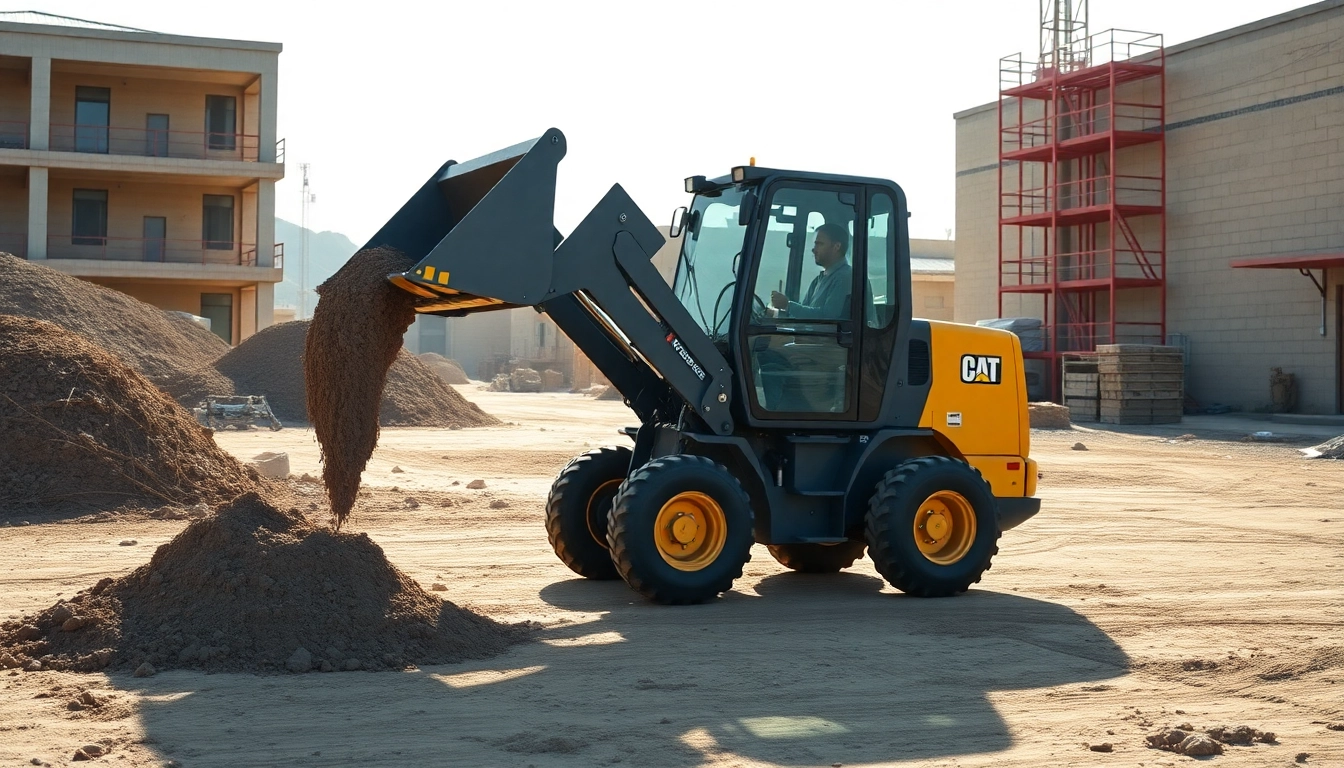Comprehensive Guide to Dumper Rental: Making the Right Choice for Your Construction and Landscaping Projects
In the fast-paced world of construction, landscaping, and material transportation, having reliable, efficient, and versatile equipment is vital for project success. Among the essential machinery in this sector are dumpers—compact, powerful vehicles designed to move bulk materials effectively across various terrains. Whether you’re managing a small renovation or a large-scale construction site, understanding the nuances of dumper rental can significantly optimize your workflow and cost efficiency. To explore the ins and outs of dumper hire and how to select the right equipment for your needs, visit the detailed Dumper rental page for more information.
Understanding Dumper Types and Their Applications
Mini Dumpers vs. Standard Dumpers: Which Fits Your Needs?
The first step in selecting the right dumper involves understanding the different types available and their specific applications. Mini dumpers, often weighing less than 1.5 tonnes, are ideal for confined spaces, delicate terrains, and lighter loads. Equipped with narrow chassis and manageable steering, they excel in urban environments, landscaping projects, and interior renovation sites where access is limited.
Conversely, standard dumpers typically range from 1.5 tonnes up to 9 tonnes or more, offering higher capacity and robustness. They are suitable for heavy-duty tasks such as bulk excavation, large-scale material movements, and earthmoving operations. Their larger size and capacity make them a staple for major construction projects where speed and volume are priorities.
Having a clear understanding of your project’s scope and site conditions will help determine whether a mini or standard dumper is more appropriate. For instance, narrow micro dumpers can maneuver through tight gateways and indoor spaces, making them perfect for renovation or indoor construction. Alternatively, large dumpers are better suited to export and distribute materials efficiently over open, rough terrain.
Features to Consider When Renting a Dumper
When evaluating dumper options, several features should influence your choice:
- Payload Capacity: Ensure the dumper can handle your typical load sizes to avoid overloading and operational delays.
- Size and Dimensions: Match the dumper’s size to your site access points and space constraints.
- Engine Power and Gradesability: Consider the terrain—steep inclines or uneven surfaces may require more powerful engines.
- Dumping Mechanism: Options include forward tip, swivel skip, high tip, and tracked dumpers. The correct mechanism enhances efficiency based on the type of materials and site layout.
- Mobility and Steering: Features such as all-wheel drive, articulated steering, or compact turning radius can improve maneuverability in confined spaces.
- Attachments and Accessories: Some models support shovels, forks, or other attachments that add multifunctionality, especially for specialized tasks.
- Fuel Type and Efficiency: Diesel engines are common, but considerations around fuel consumption and emissions are increasingly relevant in modern operations.
Factors to Evaluate for Dumper Rental Success
Site Conditions and Terrain Compatibility
Thorough site assessment is critical before renting a dumper. Rough terrain, wet or muddy ground, restricted access points, and confined spaces all influence the type of dumper you should select. For uneven, muddy conditions, tracked dumpers or those with high ground clearance can offer better stability and traction.
Weight Capacity and Truck Size Requirements
Matching the dumper’s capacity to your material volume prevents overloads that can cause mechanical failures and safety hazards. Overestimating your needs might result in unnecessary costs, while underestimating can slow down progress and increase operational challenges. Measure your typical load sizes and select equipment accordingly.
Rental Costs, Delivery, and Support Services
Cost-effectiveness hinges on transparent pricing, inclusive of delivery, pickup, and support. Compare rental rates from trusted providers, ensuring they include comprehensive support such as maintenance, operator training, and emergency assistance. Additionally, evaluate delivery timelines to align equipment availability with project schedules, minimizing delays.
Best Practices for Operating a Rented Dumper Safely
Pre-Use Inspection and Setup
Prior to operation, conduct a detailed inspection, checking for fluid leaks, tire condition, brake function, controls, and safety features like emergency stops and roll-over protection. Proper setup, including attaching safety equipment and ensuring the dumper is on a stable surface, reduces the risk of accidents.
Handling and Operating Tips
Operators should be trained on the specific dumper model and aware of the terrain. Always load the dumper evenly, avoid exceeding capacity, and operate at safe speeds—especially when traveling downhill or over uneven ground. Use clear signals and maintain communication with other site personnel for coordinated movement.
Maintenance and Post-Use Procedures
Regular maintenance, such as checking hydraulic systems, oils, and filters, prolongs equipment lifespan and ensures safety. After use, clean the dumper, report any damages, and follow the rental company’s procedures for return. Proper documentation and inspections can prevent disputes and performance issues.
Maximizing Value from Your Dumper Rental
Scheduling and Planning for Efficiency
Effective planning involves aligning dumper hire periods with project phases, avoiding idle times and reducing costs. Deploying the equipment during peak productivity periods minimizes downtime and enhances overall project flow.
Training Staff for Proper Handling
Well-trained operators understand safety protocols and efficiency techniques, reducing accident risks and equipment damage. Providing comprehensive training, including practical demonstrations and safety guidelines, yields long-term operational savings.
Measuring Project Impact and Cost Savings
Evaluate how dumper rental contributes to project completion times, safety records, and overall costs. Quantify savings from reduced labor, increased productivity, and minimized equipment downtime to justify rental investments.
Where to Find Reliable Dumper Rental Providers in the UK
Reputable Rental Companies and Their Offerings
Several established companies offer a wide range of dumpers, including mini, micro, and heavy-duty models. For example, providers like Brandon Hire Station, Speedy Hire, and Chippindale Plant provide diverse options suited for various project requirements. Their extensive fleets ensure availability and flexibility.
Comparing Prices and Terms
It’s vital to compare prices, rental durations, deposit requirements, and included services like delivery and maintenance. Many providers offer day rates, weekly discounts, and long-term rental packages. Transparent terms help avoid unexpected costs and ensure budget adherence.
Customer Reviews and Support Services
Assess reviews and testimonials to gauge reliability, customer service quality, and post-rental support. Excellent support can be critical during unforeseen issues, ensuring minimal project disruption. Choose providers known for timely service response and comprehensive assistance.








